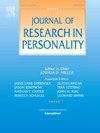Facets of trait impulsivity and their relationships to developmental trajectories of externalizing behaviors from childhood into early adolescence
IF 2.6
2区 心理学
Q2 PSYCHOLOGY, SOCIAL
引用次数: 0
Abstract
Impulsivity is a risk factor for externalizing behaviors, although the unique relationships between specific impulsivity facets and externalizing behavior development are less clear. We used Adolescent Brain Cognitive Development study data (N = 11,874) to examine whether child-reported UPPS-P impulsivity facets (9–10 years old) predicted parent-reported externalizing behaviors from childhood to early adolescence (11–12 years old). Latent growth model results showed that externalizing behaviors decreased over time. Higher negative urgency and lack of premeditation predicted greater externalizing behaviors in both childhood and early adolescence, as well as steeper declines in externalizing behaviors across time. Among the UPPS-P impulsivity facets, negative urgency and lack of premeditation may represent the most prominent indicators of externalizing behavior risk and development, highlighting their importance for targeted interventions.
求助全文
约1分钟内获得全文
求助全文
来源期刊

Journal of Research in Personality
PSYCHOLOGY, SOCIAL-
CiteScore
5.40
自引率
6.10%
发文量
102
审稿时长
67 days
期刊介绍:
Emphasizing experimental and descriptive research, the Journal of Research in Personality presents articles that examine important issues in the field of personality and in related fields basic to the understanding of personality. The subject matter includes treatments of genetic, physiological, motivational, learning, perceptual, cognitive, and social processes of both normal and abnormal kinds in human and animal subjects. Features: • Papers that present integrated sets of studies that address significant theoretical issues relating to personality. • Theoretical papers and critical reviews of current experimental and methodological interest. • Single, well-designed studies of an innovative nature. • Brief reports, including replication or null result studies of previously reported findings, or a well-designed studies addressing questions of limited scope.
 求助内容:
求助内容: 应助结果提醒方式:
应助结果提醒方式:


